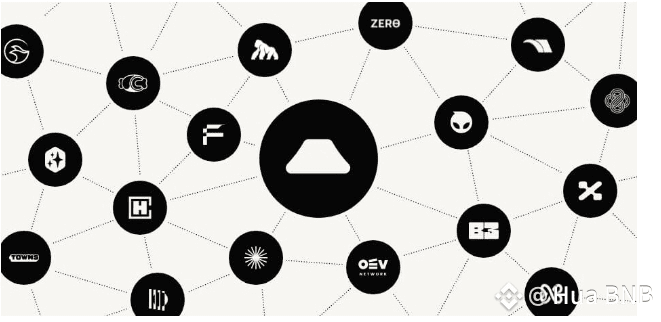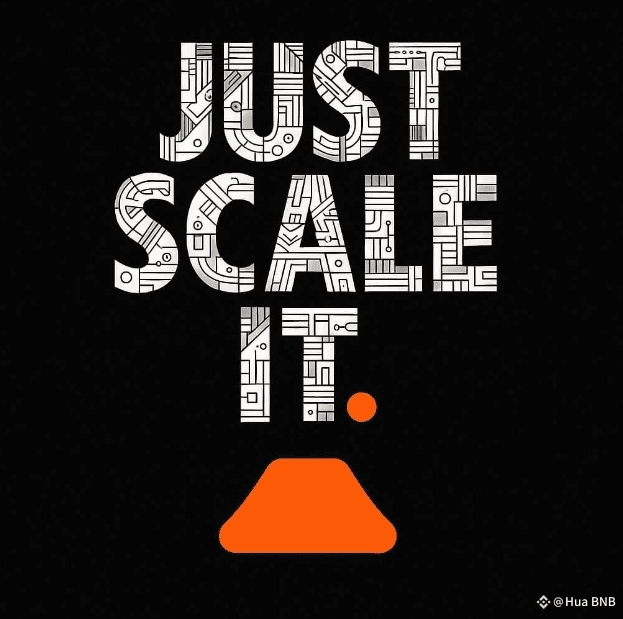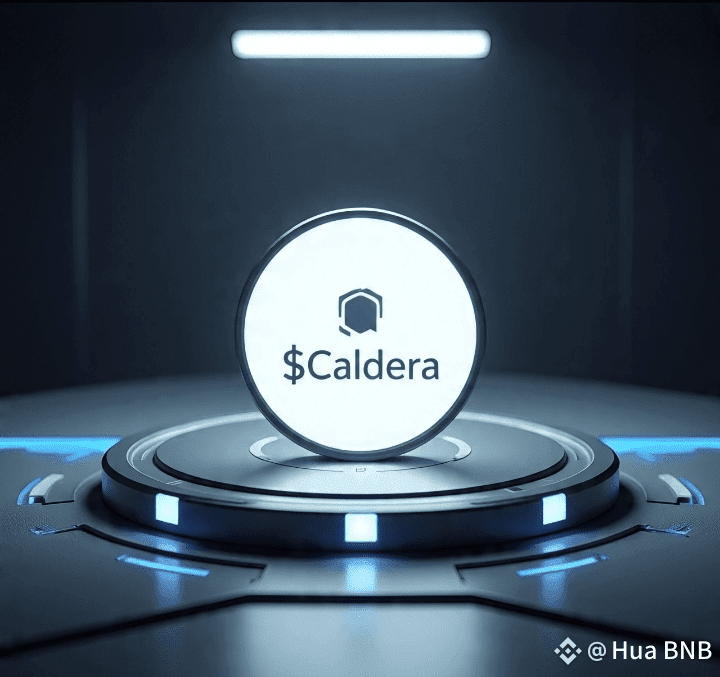In the ever-evolving world of blockchain technology, Ethereum remains a cornerstone of innovation, but its scalability challenges have sparked a wave of solutions. Among them, #Caldera stands out as a pioneering force, introducing a groundbreaking concept called the Metalayer. This comprehensive guide dives deep into Caldera Crypto and its native ERA token, exploring how it addresses Ethereum’s scaling woes, its real-world applications, tokenomics, and its vision for a unified blockchain future. Whether you're a developer, investor, or blockchain enthusiast, this article will unpack everything you need to know about Caldera and why it’s poised to reshape Ethereum’s ecosystem.

What is Caldera Crypto and the $ERA Token?
Caldera began as a Rollup-as-a-Service (RaaS) platform in 2023, enabling projects to deploy customized Ethereum rollups with ease. Rollups are Layer 2 solutions that process transactions off-chain while leveraging Ethereum’s security, significantly reducing costs and improving scalability. Caldera’s initial success lay in simplifying rollup deployment, allowing projects to launch tailored blockchains without needing extensive technical expertise.
Today, Caldera has evolved into something far more ambitious: the creator of Ethereum’s first **Metalayer**, a unifying infrastructure that connects disparate rollups into a cohesive ecosystem. The Metalayer acts as a bridge, enabling seamless communication, interoperability, and resource sharing across rollups without sacrificing their unique characteristics.
At the heart of this ecosystem lies the **ERA token**, Caldera’s native cryptocurrency. The ERA token powers cross-chain transactions, facilitates governance, and ensures network security through staking. With over 60 live rollups, $550 million in Total Value Locked (TVL), 80 million transactions, and 1.8 million unique wallets, Caldera’s ecosystem is already a powerhouse, supporting prominent chains like Manta Pacific, ApeChain, and Plume Network.

Caldera vs. ERA Token: A Clear Distinction
To avoid confusion, let’s break down the difference between Caldera and its ERA token:
Caldera**: The overarching platform and Metalayer infrastructure that enables rollup deployment and unification.
- **ERA Token**: The native utility and governance token that fuels transactions, staking, and decision-making within the Caldera ecosystem.
Think of Caldera as the Ethereum blockchain and ERA as its equivalent to ETH—a digital asset that drives the platform’s functionality.
The Problem Caldera Solves: Tackling Ethereum’s Fragmentation Crisis
Ethereum’s transition to a rollup-centric roadmap has been a game-changer, with over $38.5 billion in value flowing into Layer 2 and Layer 3 solutions since 2020. However, this rapid growth has led to a critical issue: **rollup fragmentation**. Each rollup operates as an isolated ecosystem, creating inefficiencies that hinder Ethereum’s potential for mass adoption. Caldera identifies three core problems:

1. **Isolated Rollups**: Rollups lack native interoperability, relying on Ethereum’s Layer 1 for cross-chain interactions, which is slow and costly.
2. **Fragmented Infrastructure**: Infrastructure providers like bridges and oracles must deploy separate solutions for each rollup, increasing complexity and costs.
3. **Limited User Engagement**: Traditional rollup designs restrict user participation in network operations, reducing community involvement and decentralization.
Caldera’s Metalayer addresses these challenges by creating a unified framework that connects rollups, streamlines infrastructure, and empowers users to participate actively in the ecosystem.
### A Historical Analogy: The Internet’s Evolution
Caldera’s vision mirrors the early days of the internet, when disconnected networks struggled to communicate. The introduction of standardized protocols like TCP/IP transformed the internet into a global, interoperable system. Similarly, Caldera’s Metalayer aims to be the “TCP/IP of Ethereum rollups,” providing a universal language for rollups to interact seamlessly while preserving their individuality.
## The Story Behind Caldera: From Vision to Victory
Caldera was born from a simple yet powerful insight: scaling Ethereum doesn’t require a single, faster blockchain but rather a network of interconnected rollups. Launched in 2023, Caldera’s Rollup-as-a-Service model allowed projects to deploy customized rollups with a single click, eliminating the need for complex engineering teams. This democratized access to blockchain infrastructure, enabling developers to focus on building innovative applications.
As Caldera grew, it became clear that rollup fragmentation was a growing threat to Ethereum’s ecosystem. The team pivoted to develop the Metalayer, a revolutionary layer that unifies rollups across frameworks like Optimism, Arbitrum, ZKsync, and Polygon. This evolution transformed Caldera from a service provider into a foundational infrastructure for Ethereum’s future, with the ERA token as its lifeblood.

Today, Caldera supports over 60 rollups, processing millions of transactions and hosting a vibrant community of developers and users. Its success lies in its ability to balance flexibility, scalability, and interoperability, making it a leader in the Layer 2 space.
## Key Features and Benefits of Caldera and the ERA Token
Caldera’s Metalayer is a game-changer, offering a suite of features that set it apart from traditional Layer 2 solutions. Here’s a closer look at its core capabilities:
### 1. The Metalayer: A Unified Ecosystem
The Metalayer is Caldera’s crown jewel, acting as a central hub that connects all Ethereum rollups. Unlike standalone Layer 2 solutions, the Metalayer enables seamless communication and resource sharing while preserving each rollup’s unique features. This creates a cohesive ecosystem where rollups work together, not in isolation.
### 2. Seamless Message Passing
The Metalayer uses a decentralized validator network to relay messages between rollups. This system employs an M-of-N signing threshold (where N > 2), ensuring no single party can censor or manipulate communications. This robust design enhances security and efficiency.
### 3. Fast Finality and Preconfirmations
Caldera’s Metalayer delivers near-instant transaction finality, rivaling the speed of Web2 applications. By reducing settlement times across rollups, it provides a smooth, user-friendly experience without compromising security.
### 4. Guardian Nodes for Community Participation
Guardian Nodes allow community members to participate in network operations, reinforcing Ethereum’s decentralization ethos. These nodes provide an additional layer of security and enable users to have a stake in the ecosystem’s success.
### 5. Advanced State Management
The Metalayer enables cross-chain state accessibility by posting aggregate hashes of state roots from participating chains. Users can submit Merkle proofs to verify states across rollups, ensuring transparency and security.
### 6. Developer-Centric Tools
Caldera empowers developers with tools to build high-performance applications that leverage the strengths of multiple rollups. This flexibility allows developers to create innovative solutions that were previously impossible due to rollup isolation.
### 7. Native Yield Distribution
The Metalayer fosters a sustainable economy by distributing value to dedicated stakeholders, such as validators and community members, ensuring long-term ecosystem growth.
Real-World Applications of Caldera Crypto

Caldera’s Metalayer unlocks a wide range of use cases, transforming how developers, businesses, and users interact with Ethereum’s ecosystem. Here are some key applications:
### 1. Multi-Rollup Application Development
Developers can build applications that operate across multiple rollups, combining the strengths of different frameworks. For example, an app could use Optimistic rollups for fast transactions and ZK rollups for privacy-sensitive operations, delivering seamless user experiences.
### 2. Cross-Chain DeFi Protocols
Decentralized finance (DeFi) applications can tap into liquidity across the entire Ethereum rollup ecosystem, improving capital efficiency and enabling complex financial products that leverage diverse rollup capabilities.
### 3. Streamlined Infrastructure Solutions
Infrastructure providers like bridges and oracles can deploy services once and serve all rollups through the Metalayer, reducing operational complexity and costs.
### 4. Enterprise Blockchain Integration
Businesses can deploy private rollups that benefit from the Metalayer’s shared security and connectivity, making blockchain adoption more practical and efficient for enterprises.
### 5. Gaming and Metaverse Experiences
Gaming platforms can use the Metalayer to create immersive experiences that span multiple rollups. For instance, one rollup could handle high-frequency game actions, while another secures valuable in-game assets.
## ERA Tokenomics: A Balanced Approach
The ERA token’s distribution is designed to foster long-term growth and community engagement. Here’s how the tokens are allocated:
- **Community Airdrops (7%)**: Rewarding early adopters, Caldera chain users, and Layer 2 participants to drive engagement.
- **Foundation Treasury (35.94%)**: Managed by the Caldera Foundation for protocol development and community governance via a DAO.
- **Research & Development (10.235%)**: Funding future innovations, protocol maintenance, and support for developers and node operators.
- **Core Team (14.75%)**: Allocated to the founding team to ensure alignment with Caldera’s long-term vision.
- **Investors (32.075%)**: Supporting early backers who provided capital for platform development.
The token unlock schedule is structured to prevent market disruptions, with vesting periods and cliffs ensuring sustainable distribution. Airdrops are immediately available to boost community participation.
## ERA Token Utility: Powering the Metalayer
The ERA token is the backbone of Caldera’s ecosystem, serving multiple critical functions:
### 1. Omnichain Gas Token
ERA is the universal gas token for Metalayer operations, covering fees for cross-chain transactions and data propagation, ensuring consistent economic incentives.
### 2. Staking for Network Security
Nodes must stake ERA tokens to participate in the Metalayer’s proof-of-stake consensus, with participation levels tied to the amount staked. This incentivizes network security and decentralization.
### 3. Subnet Participation
Specialized subnetworks within the Metalayer, such as those for zero-knowledge proof generation, use ERA for consensus and operations, enabling tailored functionality for rollups.
### 4. Governance and Protocol Evolution
ERA token holders have a say in Caldera’s future through on-chain governance, including:
- Voting on protocol upgrades.
- Proposing and approving Caldera Improvement Proposals (CIPs) for treasury use, grants, and strategic decisions.
- Electing Foundation directors and security council members to oversee critical operations.
## The Future of Caldera: A Unified Blockchain Ecosystem
Caldera’s roadmap is ambitious, aiming to establish the Metalayer as the definitive infrastructure for Ethereum’s rollup ecosystem. Key priorities include:
- **Expanding Subnet Functionality**: Supporting specialized use cases like privacy-focused rollups or high-throughput gaming chains.
- **Enhancing Cross-Rollup Communication**: Developing more efficient protocols for seamless interoperability.
- **Decentralized Governance**: Empowering the community to shape Caldera’s evolution through robust DAO mechanisms.
Long-term, Caldera envisions a self-sustaining ecosystem where rollups innovate independently while benefiting from shared security, liquidity, and infrastructure. By eliminating fragmentation, Caldera aims to become the backbone of Ethereum’s scaling solution, much like TCP/IP underpins the internet.
## Caldera’s Competitive Edge
Caldera operates in a crowded Layer 2 space, competing with projects like Polygon, Arbitrum, and Optimism, as well as interoperability-focused platforms like Cosmos and Polkadot. However, Caldera’s unique advantages set it apart:
- **Unified Infrastructure**: Unlike competitors focused on individual rollups, Caldera connects all frameworks into a single ecosystem.
- **Framework-Agnostic Design**: Caldera supports Optimism, Arbitrum, ZKsync, and Polygon, offering unmatched flexibility.
- **One-Click Deployment**: The RaaS model simplifies rollup creation, making it accessible to projects of all sizes.
- **Cross-Chain Native Architecture**: Built for interoperability from the ground up, unlike retrofitted solutions.
- **Proven Traction**: With 60+ rollups, $550M in TVL, and 80M+ transactions, Caldera has real-world adoption that many competitors lack.
By unifying rollups rather than competing with them, Caldera creates a collaborative ecosystem that amplifies the strengths of each chain.
# Conclusion: Caldera’s Role in Ethereum’s Future
Caldera Crypto and its ERA token represent a bold step toward solving Ethereum’s scalability and fragmentation challenges. The Metalayer’s innovative approach to rollup unification, combined with the ERA token’s versatile utility, positions Caldera as a leader in the Layer 2 space. From enabling multi-rollup applications to empowering cross-chain DeFi and enterprise solutions, Caldera is paving the way for a more interoperable, scalable, and user-friendly blockchain ecosystem.

As Ethereum continues to evolve, Caldera’s vision of a unified rollup ecosystem could become the foundation for the next generation of blockchain applications. Whether you’re a developer looking to build cutting-edge dApps or an investor seeking the next big opportunity, Caldera and the ERA token are worth watching closely.
#Caldera @Caldera Official $ERA

